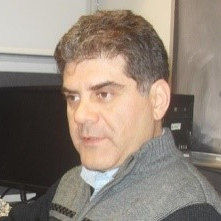Photoionization of Atoms
A special issue of Atoms (ISSN 2218-2004).
Deadline for manuscript submissions: closed (31 December 2023) | Viewed by 24556
Special Issue Editors
Interests: photoionization; electron-ion recombination; photo-excitations; electron impact excitation; spectroscopy; X-ray spectroscopy for atomic processes and biomedical applications; database
Special Issue Information
Dear Colleagues,
Photoionization of an atom or ion is one most common processes involving the interaction of a photon with an atom. It is one of the four most dominant atomic processes, along with photo-excitation, electron-ion recombination, and electron impact excitations, in astrophysical plasmas that produce the spectra and hence carries considerable information about the constituent elements and their abundances, plasma opacity, ionization fractions, etc. This special issue will present the precise underlying science of photoionization. Although direct photoionization via absorption of a photon by the atomic system happens, resonances form in the process as the energy of the photon-atom system matches to that of a doubly excited state, known as the autoionizing state, lying above the ionization threshold. It is inherent to study the process with inclusion of resonances. The objective of this issue is to advance the current understanding of atomic photoionization, both theoretically and experimentally, for complex atomic systems with demonstrations of various features in the low and high energy regions, that will impact the accuracy of photoionization environments, modeling of astrophysical and laboratory plasmas and their applications.
Prof. Dr. Sultana N. Nahar
Prof. Dr. Guillermo Hinojosa
Guest Editors
Manuscript Submission Information
Manuscripts should be submitted online at www.mdpi.com by registering and logging in to this website. Once you are registered, click here to go to the submission form. Manuscripts can be submitted until the deadline. All submissions that pass pre-check are peer-reviewed. Accepted papers will be published continuously in the journal (as soon as accepted) and will be listed together on the special issue website. Research articles, review articles as well as short communications are invited. For planned papers, a title and short abstract (about 100 words) can be sent to the Editorial Office for announcement on this website.
Submitted manuscripts should not have been published previously, nor be under consideration for publication elsewhere (except conference proceedings papers). All manuscripts are thoroughly refereed through a single-blind peer-review process. A guide for authors and other relevant information for submission of manuscripts is available on the Instructions for Authors page. Atoms is an international peer-reviewed open access monthly journal published by MDPI.
Please visit the Instructions for Authors page before submitting a manuscript. The Article Processing Charge (APC) for publication in this open access journal is 1500 CHF (Swiss Francs). Submitted papers should be well formatted and use good English. Authors may use MDPI's English editing service prior to publication or during author revisions.
Keywords
- photoionization
- experimental features
- theoretical features
- benchmarking
- astrophysical applications
Benefits of Publishing in a Special Issue
- Ease of navigation: Grouping papers by topic helps scholars navigate broad scope journals more efficiently.
- Greater discoverability: Special Issues support the reach and impact of scientific research. Articles in Special Issues are more discoverable and cited more frequently.
- Expansion of research network: Special Issues facilitate connections among authors, fostering scientific collaborations.
- External promotion: Articles in Special Issues are often promoted through the journal's social media, increasing their visibility.
- e-Book format: Special Issues with more than 10 articles can be published as dedicated e-books, ensuring wide and rapid dissemination.
Further information on MDPI's Special Issue polices can be found here.






